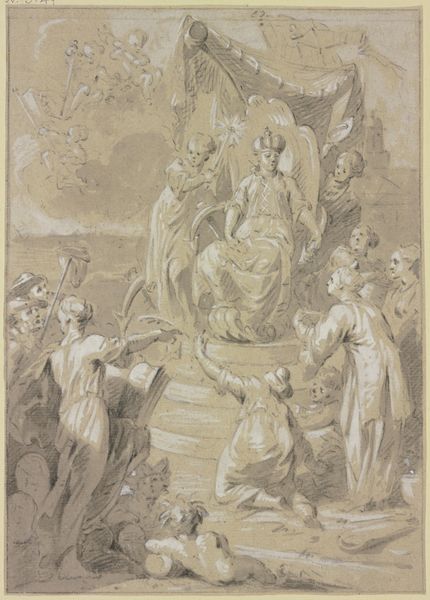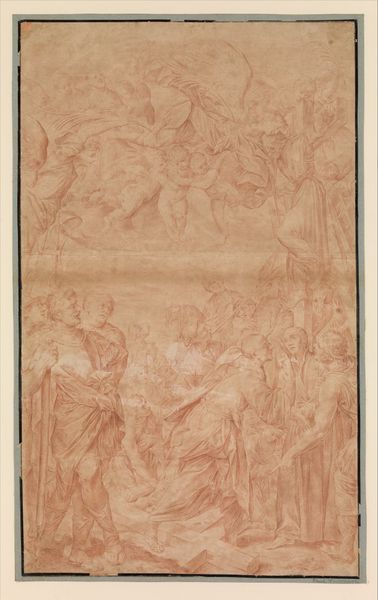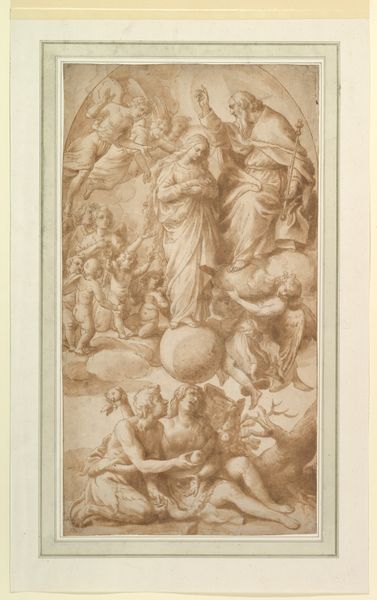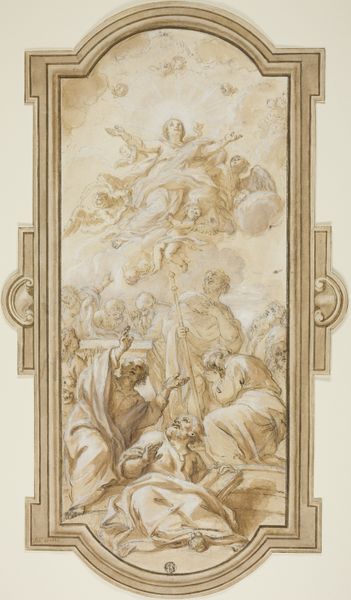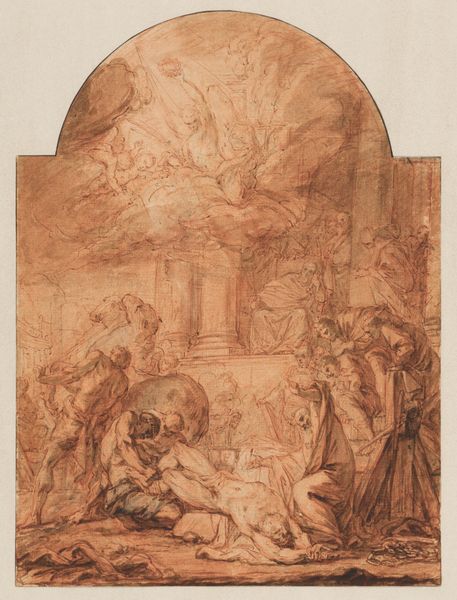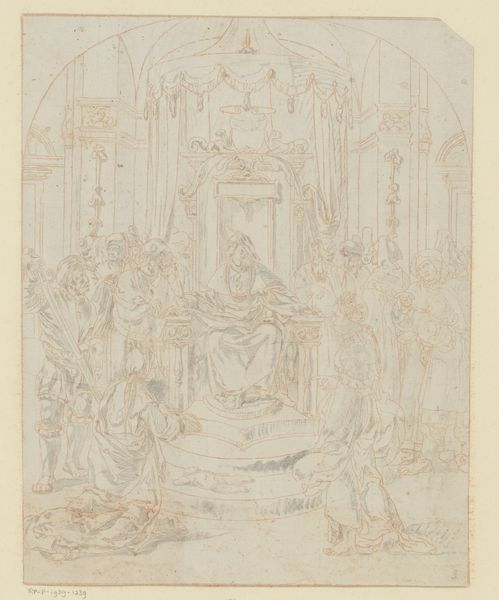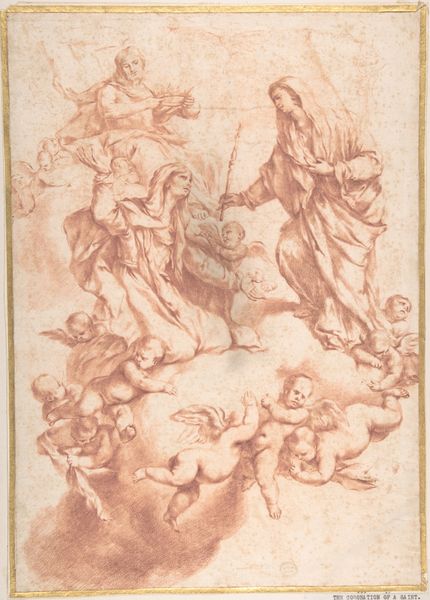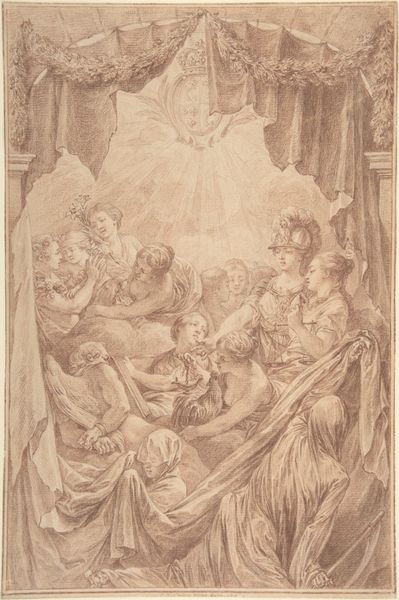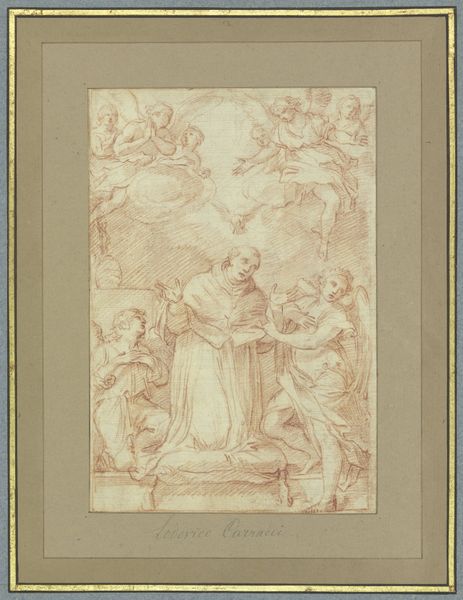
The Holy Kinship (Madonna and Child and St. John) with Prophets and Symbols of the Four Evangelists 1606 - 1688
0:00
0:00
drawing, print, paper, ink, pencil
#
portrait
#
drawing
#
allegory
# print
#
pencil sketch
#
mannerism
#
figuration
#
paper
#
madonna
#
ink
#
group-portraits
#
pencil
#
history-painting
#
academic-art
#
watercolor
Dimensions: sheet: 12 9/16 x 7 15/16 in. (31.9 x 20.2 cm)
Copyright: Public Domain
Editor: Here we have Joachim von Sandrart's "The Holy Kinship," dating sometime between 1606 and 1688. It's rendered in pencil and ink on paper, now residing at the Met. The initial feeling I get is…dreamy. Kind of faded, a whisper of something grand. It’s packed with figures and symbols, but their faces are all obscured by the limited colour palette. What strikes you when you look at this? Curator: Whispers of granduer, I like that! It does have that quality of a faded tapestry, doesn't it? I see Sandrart wrestling with representing the divine in human form, that never-ending artistic quest. The piece, a red chalk drawing really, is all about genealogy and spiritual lineage. It shows Madonna, the child and Saint John amidst the symbols of the Four Evangelists - a Lion, an Eagle, a Man and an Ox. There's a whole throng of prophets peering in! It makes me think: did Sandrart believe he was mapping out something real or creating a visually stunning puzzle about faith? Editor: A visual puzzle is a good way to put it. Are the sketchy lines and red monochrome meant to distance us from the figures? It feels more like an idea than an attempt to really *know* them. Curator: Precisely! Perhaps he was using the drawing, a preliminary sketch in preparation for a more worked painting? Think about the culture back then. Religion, authority, tradition… It was a different world. What if this ‘distance’ allowed viewers to bring their own devotional feelings to it, in order to create their own personalised visual map of religious teachings? It certainly makes the artwork, intentionally or not, so much more democratic. Editor: That reframes everything! So, instead of being an inaccessible historical artefact, it could actually be seen as an invitation for viewers to explore their own spiritual understanding through art. Curator: Yes! Or at least it tickles my brain to think so! Each stroke seems imbued with Sandrart’s personal meditations as much as doctrine.
Comments
No comments
Be the first to comment and join the conversation on the ultimate creative platform.



